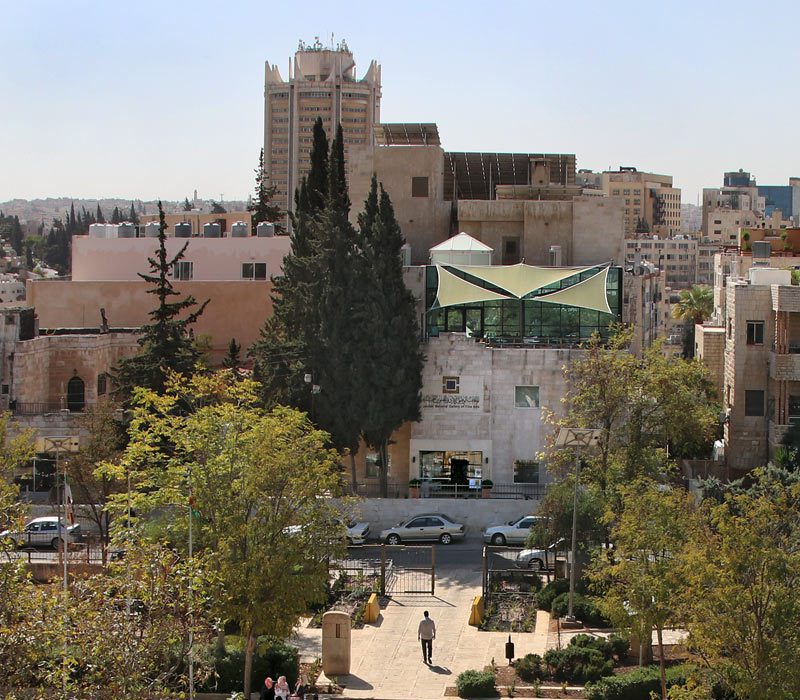 Exhibition Archives: From the Ocean to the Gulf and Beyond (2002)
Exhibition Archives: From the Ocean to the Gulf and Beyond (2002)


In the Exhibition Archives series, we examine and discuss significant shows of modern and contemporary Arab art around the world.
What: A group exhibition of 223 artists tied together under the theme of ‘modern Arab art’.
Where: Jordan National Gallery of Fine Arts, Amman.
When: 4 April – 28 August 2002.
Significance: One of the first exhibitions ever to deliberately discuss and present modern Arab art.
Exhibited Artists: 223 artists across the entire Arab region, including the likes of Saliba Douaihy, Shafic Abboud, Shaker Hassan Al Said, Mohamed Melehi and Farid Belkahia.
Organised during Amman’s reign as the Arab Cultural Capital in 2002, the exhibition From the Ocean to the Gulf and Beyond: Modern Arab Art was one of the earliest exhibitions presenting modern Arab art. A category often rejected and exhibited both internationally and regionally much less than contemporary art from the Arab world. In this exhibition, modern Arab art was celebrated and honoured as the show presented 223 artists from all over the region. While the exhibition commemorated regional modern art practices, it also saluted its host institution, the Jordan National Gallery of Fine Arts, a regional powerhouse for modern and contemporary Arab art. The museum was founded in 1980 with a collection of merely 77 works. By 2002, the collection included over 1800 works of artists hailing from 45 countries across the globe. This collection show demonstrated the energy and passion of the Amman-based art museum – the first museum in the world dedicated to modern Arab art across the entire region. The founder of the gallery, art historian and practising artist Wijdan Ali gathered a number of significant works from the museum’s collection to present one of the largest, if not the largest ever, show of modern Arab art – a remarkable act and achievement in 2002.
The prefix in the exhibition’s title, From the Ocean to the Gulf and Beyond, refers to the Arab world’s considerable size covering a large area from the Atlantic Ocean to the Arabian Gulf and the observation that although many artists continue to live and practice from the region, many have also moved to other parts of the world, extending from Japan to North America and Europe – that is where the ‘beyond’ is. Ali’s approach to the exhibition-making was both personal and comprehensive. While she notes in the exhibition catalogue that she chose the exhibited works primarily through ‘feeling’, dictated ‘first and foremost by the work itself’, the final result presents an encompassing view of regional art-making from the end of the nineteenth century to 1990s covering a wide range of media including painting, etching, sculpture, ceramics, installation and weaving. The show covered all generations of modern Arab artists, from the first generation of the early ‘pioneers’ such as Raghib Ayyad, Fahrelnissa Zeid, Seif Wanly, Saliba Douaihy to the successive generations born in the 1920s, 1930s, 1940s and up to the younger talents of the 1960s and 1970s. To facilitate the audience’s understanding of the major trends and developments in modern Arab art in the last 150 years or so, and to arguably also contribute to regional art history, the displayed works were divided according to subject, including sceneries, symbolism, woman, calligraphic school, abstraction and socio-political issues. The exhibition was accompanied by an extensive catalogue with a number of brief essays as well as coloured images and short biographies of all the exhibited artists.
You might also enjoy:


 Exhibition Archives: From the Ocean to the Gulf and Beyond (2002)
Exhibition Archives: From the Ocean to the Gulf and Beyond (2002) 

